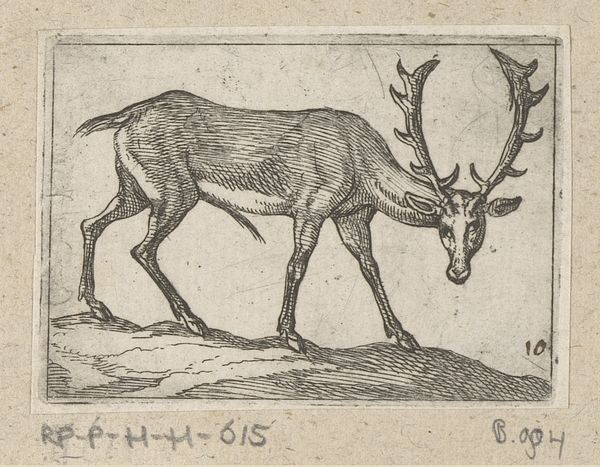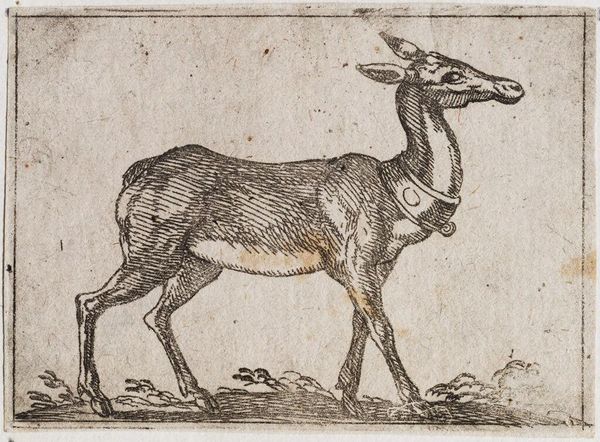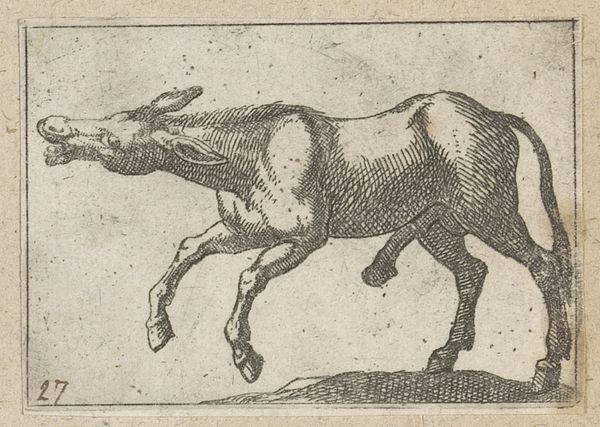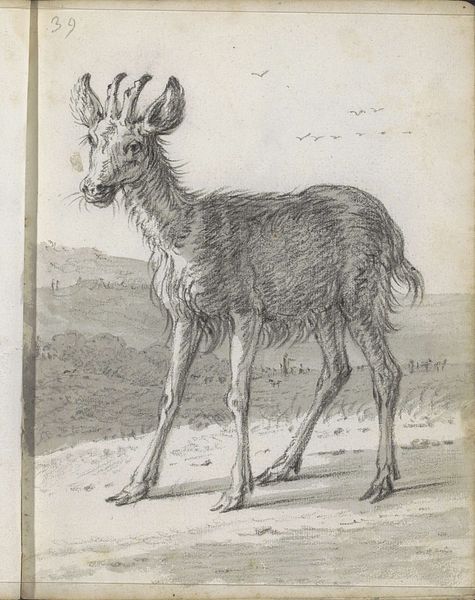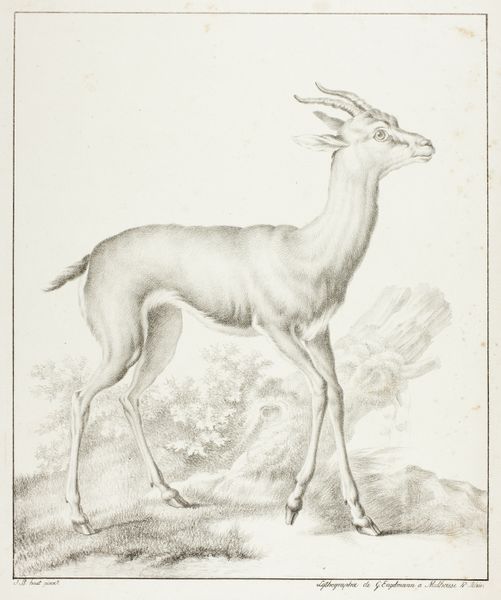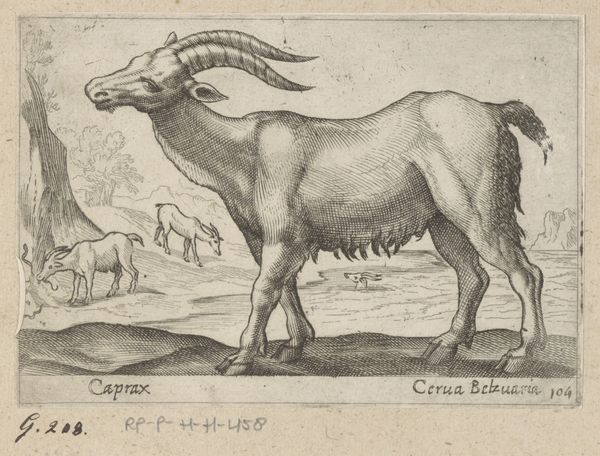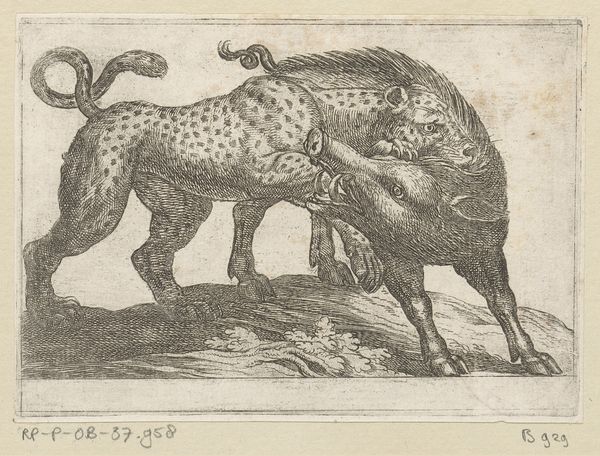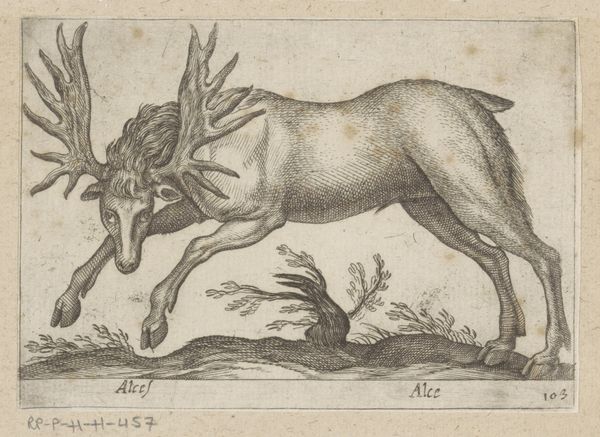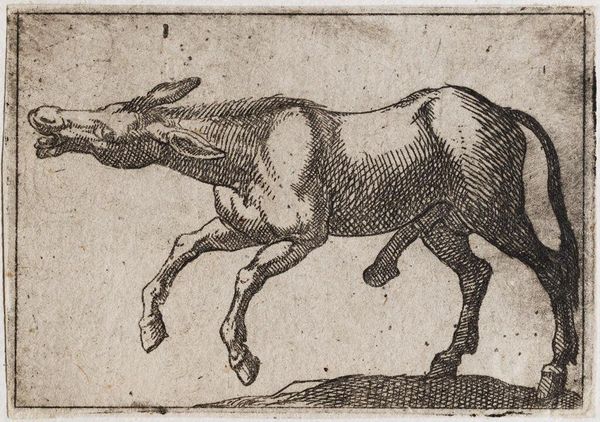
drawing, paper, engraving
#
portrait
#
drawing
#
aged paper
#
toned paper
#
quirky sketch
#
animal
#
sketch book
#
landscape
#
mannerism
#
figuration
#
paper
#
personal sketchbook
#
sketchwork
#
ink colored
#
line
#
sketchbook drawing
#
storyboard and sketchbook work
#
sketchbook art
#
engraving
Dimensions: height 43 mm, width 67 mm
Copyright: Rijks Museum: Open Domain
Editor: This is "Standing Deer," a drawing by Antonio Tempesta, made sometime between 1565 and 1630. The work, rendered in ink, shows a lone deer, standing rather formally. The deer’s wearing a collar… I find that strange. What do you make of this drawing? Curator: The collar is certainly a focal point. It speaks to the deer's relationship to humanity, doesn't it? Consider the broader context: animals frequently symbolized status and power. Editor: So, this isn't just a drawing of an animal, but a statement about hierarchy? Curator: Precisely! In Tempesta’s time, hunting was a pastime of the elite. Owning or displaying depictions of animals like this reinforced social dominance. Does that collar perhaps transform the animal from a denizen of the natural world to a domesticated object of wealth? What’s your reading? Editor: It feels exploitative, definitely not a celebration of nature but a claim *over* nature. I almost feel sorry for the deer. Curator: Exactly. Now consider the style - it’s not exactly naturalistic. The rigid lines, the posed stance – these create distance, almost as if the deer is being displayed. How might this artifice contribute to its symbolic meaning? Editor: It reinforces that feeling of control, that it's been deliberately shaped into something pleasing to the owner. Curator: And how does that sit with you? In what way does it challenge contemporary ethics, values and norms? Editor: It’s jarring. We're more aware now of the environmental impact and exploitation involved in human domination over nature. To see it so blatantly represented… it's uncomfortable. Curator: Indeed, and that discomfort can be productive, right? This piece encourages us to think critically about our relationship with the natural world. Editor: I’ll definitely look at art from this period differently now, recognizing those underlying power dynamics. Thanks! Curator: It was my pleasure! Always remember to question and contextualize; that's where art truly comes alive.
Comments
No comments
Be the first to comment and join the conversation on the ultimate creative platform.
